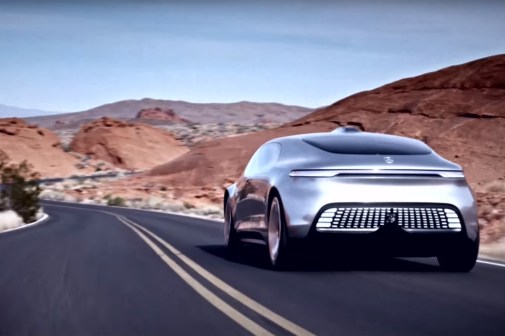Driving under the influence of electronics: Bill challenges distracted driving in Washington state

Seattle is one of the rare U.S. cities where drivers can play video games on cellphones without a citation for distracted driving. They can also check their Facebook, type one-handed tweets, scan headlines or watch their favorite episodes of “The Walking Dead.”
Loopholes in Seattle’s municipal code and state regulations allow this kind of reckless behavior and it’s a proven to be a dangerous problem that lawmakers are trying to fix across Washington state. State Rep. Jessyn Farrell, a Democrat from Seattle, and Sen. Ann Rivers, a Republican from the city of La Center, are collaborating on a bill called the Driving Under the Influence of Electronics Act to stop such behaviors.
The current laws are more than a decade old and critics point out they do not account for the new wave of apps and wireless devices. Seattle’s Department of Transportation (SDOT) is one group calling for a legislative update, whether it be through the current draft of legislation or some other means. In an email to StateScoop Jim Curtin, SDOT’s traffic safety coordinator, said the outdated standards have likely contributed to a rise in distracted driving related accidents and deaths.
“The number of collisions that were attributed to inattention has skyrocketed in Seattle despite local and statewide education and enforcement efforts,” Curtin said. “SDOT collision data from 2011 to 2014 show a 280 percent increase in collisions where inattention was listed as a contributing factor by law enforcement.”
He added that in Seattle the top contributing circumstance during the past three years for collisions was inattention. Between 2013 and 2016, drivers concentrating on things other than the road contributed to 15 percent of all traffic fatalities in Seattle and in 2015 played a role in 3,626 crashes.
Still, cell phones are still permitted within city limits so long as a driver holds the phone in front of his face, and not next to their ear, and is not texting. Curtin said this caveat has been especially vexing for law enforcement who pull drivers over for cell phone use only to hear from the drivers that they were only dialing a number or finding directions on Google Maps.
“This allows drivers to mask dangerous behaviors,” Curtin said. “So enforcement, and modifications such as those being proposed in the state legislature, and behavior changes are both components of solutions for distracted and inattentive driving.”
In an interview with The Seattle Times, Rivers said that once finalized, the new revisions would broaden the scope of inattentive driving behaviors to include any kind of phone use, with a possible exception for mapping apps and phones that are mounted on a dashboard. Further updates would jack up penalties on violators. The fine of $124 would be pushed up to $350 and citations would be reported to insurance companies — something that is not done presently.
While SDOT has not taken an official position on the specific legislation, Curtin said he hopes legislators considers Washington’s Target Zero initiative, a set of policy recommendations aim to prevent all driving-related deaths in the state by 2030. Among its recommendations, the report urges lawmakers in cities and the state to refresh regulations to prohibit drivers from using handheld devices at all times. This extends to when cars are temporarily stopped — as in the case of stoplights and dropoffs — and calls for notification to insurance companies when violations occur.
Despite Washington’s challenges with distracted driving, the problem is not a regional one. The U.S. Department of Transportation reports that in 2014 alone there were 3,179 deaths and 431,000 injuries directly attributed to the issue — the department called it an epidemic.
DOT’s advocacy website, Distraction.gov, said that while most states have strong laws for distracted driving — 46 for example, ban text messaging for all drivers — there is still more room for improvement.
Alaska has no ban on handheld device use while driving. Arizona only has a handheld device ban on school bus drivers. Arkansas just bans handheld device use for drivers 20 years of age and under. Missouri only bans texting for drivers 21 and under. While in Montana, there are absolutely no laws for distracted driving. These are just a few state examples that have prompted the department to call on states to adopt safer laws.
As far as SDOT is concerned, Curtin said its definition of distracted driving is clear:
“SDOT defines distraction as anything that diverts a driver’s attention — manually, visually, or mentally — from the primary task of driving. Mobile phones are particularly concerning since they can involve all three types of distraction.”





